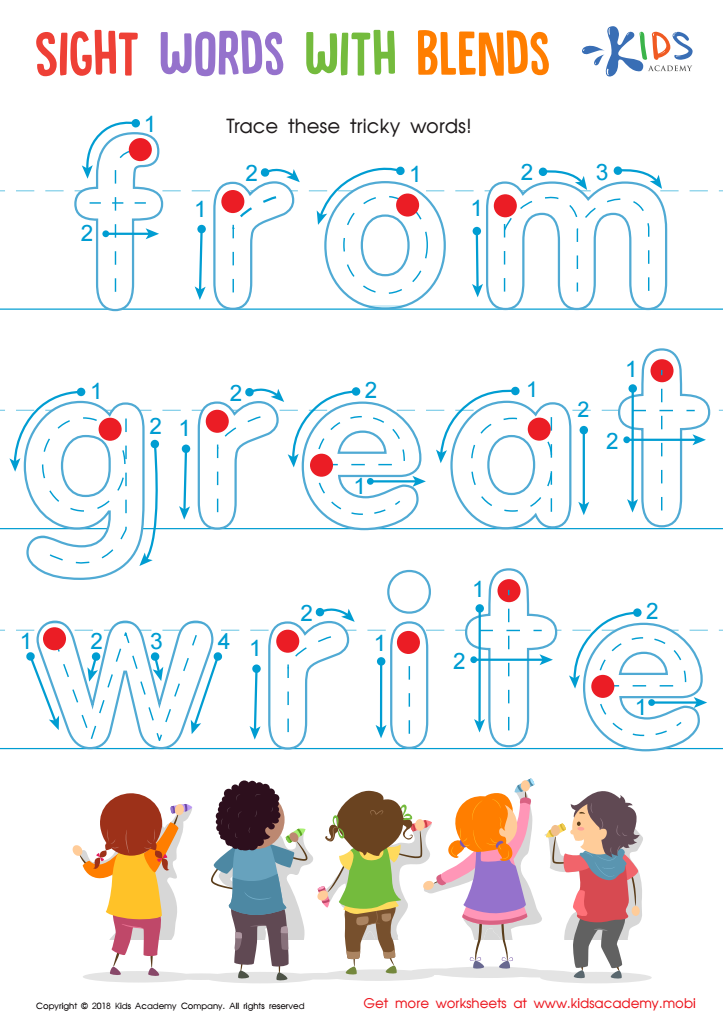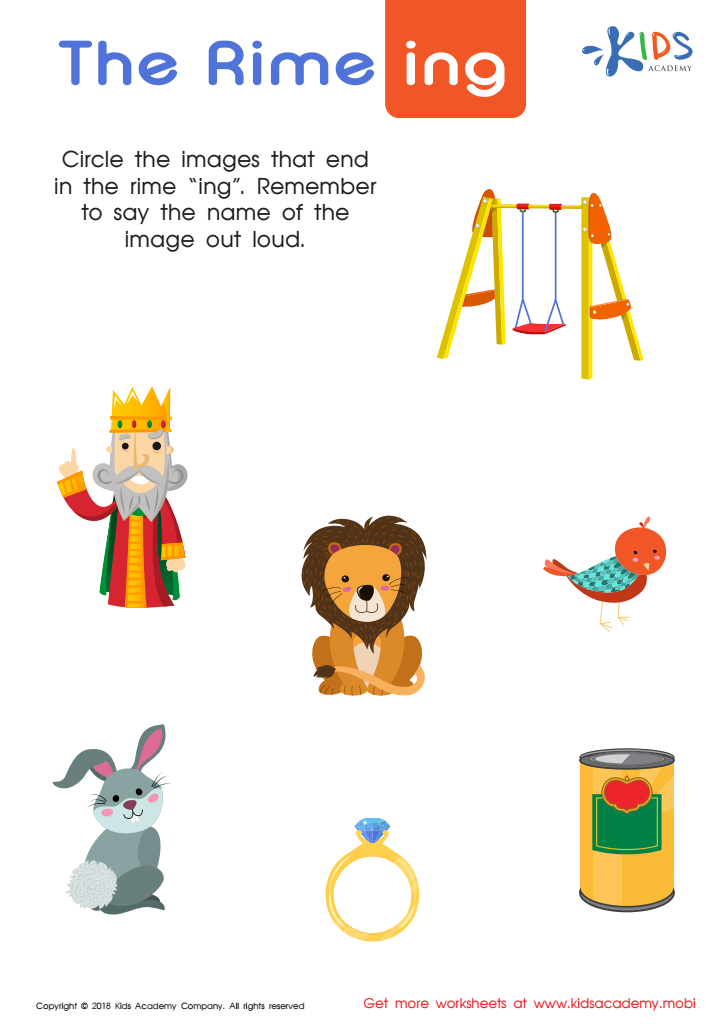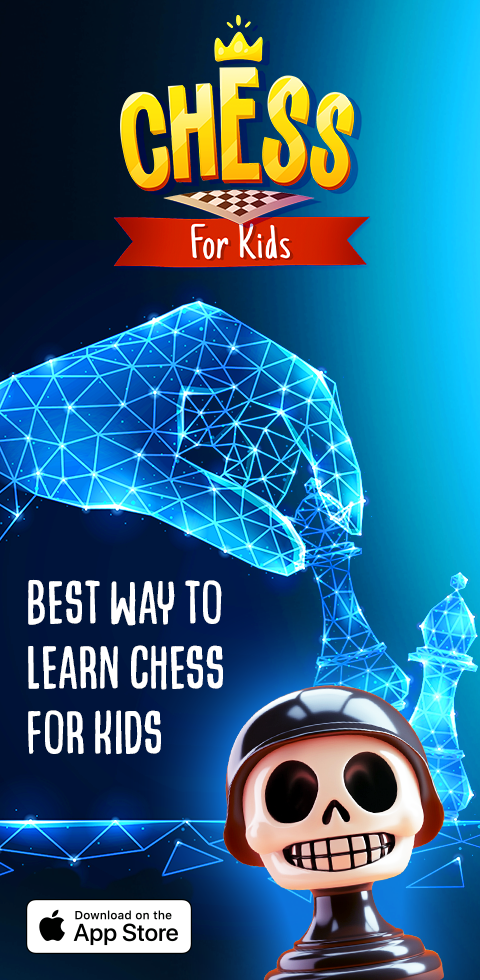Phonics recognition Reading Worksheets for 6-Year-Olds
3 filtered results
-
From - To
Introduce your 6-year-old to the fascinating world of reading with our Phonics Recognition Reading Worksheets. Developed by expert educators, these worksheets provide essential practice in identifying and understanding phonics. Designed to support early readers, they transform learning into fun through engaging activities, vibrant illustrations, and interactive exercises. Kids will enhance their letter-sound association, decoding skills, and reading fluency, all while building confidence and enthusiasm for reading. Perfect for both home and classroom environments, these worksheets offer comprehensive support to foster a strong foundation in reading skills, setting the stage for lifelong literacy success. Explore and download now!


Sight Words with Blends Worksheet


The Rime "ing" Worksheet


Match–Up Game: Beginning Sounds Worksheet
Phonics recognition is a pivotal element in teaching reading to 6-year-olds, and both parents and teachers should prioritize it to facilitate foundational literacy skills. Phonics is the relationship between sounds and their corresponding letters or groups of letters. For young children, phonics serves as the building blocks for reading and writing proficiency.
First, phonics helps children understand the straightforward correspondence between letters and sounds, enabling them to decode words efficiently. This skill is crucial for independent reading. By grasping phonemic patterns, children can break down unfamiliar words, improving reading fluency and accuracy.
Second, early phonics recognition is linked to better reading comprehension. When children can effortlessly decode words, they can focus more on understanding the text's meaning rather than stumbling over each word. This improved comprehension sets a strong foundation for future academic success, as reading is integral to learning across all subjects.
Finally, confidence and motivation to read are outcomes of effective phonics instruction. When children can read new words using phonics strategies, their confidence grows. This positive experience fosters a love for reading, encouraging lifelong learning habits.
By incorporating phonics recognition into daily reading practices, parents and teachers can equip children with essential tools for academic success and instill a joy for reading that lasts a lifetime.
 Assign to My Students
Assign to My Students



















